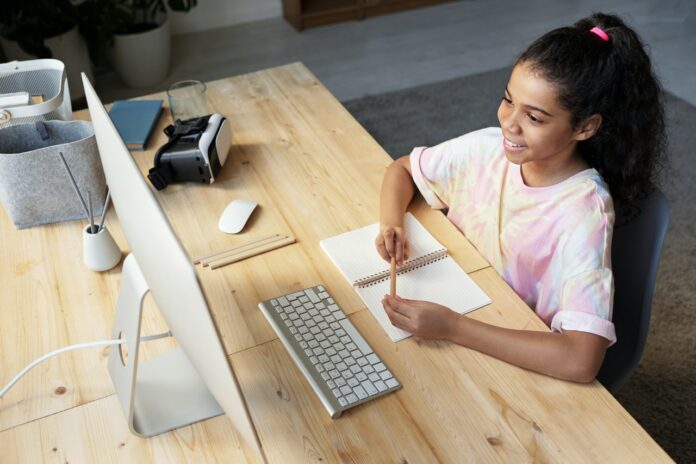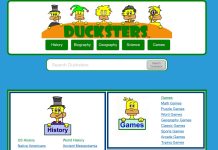
A learning space is a designated area in your home that acts as a school for kids. Homeschooling is no longer in the old-fashioned way anymore where the dining table served as the desk, and you’re good to go. So recently, people have started setting up stations where their kids can comfortably study from home.
Reasons for Studying at Home
Different conditions can result in a parent deciding that their kids will school from home. Although each situation is different, the noticeable benefits are evident. The following are the common reasons;
- Medical conditions.
- Parent’s insecurities
- Maintenance of private lives.
- A long way from school.
- Moving to a new place and you were almost over with a grade in your previous school.
- Public influence (calamity, pandemics, or wars).
Conditions for Learning Space Ideas
Well, as it might seem as simple as getting a space and declaring that it’s the new learning space, there are a host of factors that you should consider to come up with a learning space design at home efficiently.
Some of the issues to put into considerations include;
- The lighting of the room – For your child to correctly see through texts in books or get to compose their texts in cases where they have assignments, they will require natural light. Ensure that where you’ve set up the learning station is well-lit, not overly done but has enough light to enable smooth learning through classes.
- Location – You have to be smart about the kind of place you want to position the learning space library. One of the primary considerations is the environment around the room. Not close to the washrooms, not close to the kitchen, and not close to the living room. Somewhere quiet enough and chilled.
- Accessibility – You don’t want to sit in your kid’s learning space example, in the basement, or the store outside the house. Make it accessible, somewhere they’ll have that privacy but will also be comfortable and safe. Maybe next to their room such that when they complete their homework, they can put on their pajamas, brush their teeth, and retire to bed.
- Setting – The whole atmosphere of the learning space does matter. Ensure that where you plan to position the desk for studying is at an angle where the kid won’t quickly get distracted and end up carried away by the events happening off class. To pioneer concentration, ensure that the setting favors the child always.
- The kid’s opinion – You have to ask what your child thinks about a learning space and how he/she would want it to be structured. Allowing them to participate actively will enable them to be more comfortable in the room, which will give good results in school and create a good atmosphere of learning.
- The grade – Age matters when coming up with a learning space since it directly affects the study’s comfortability and level. It’s all fun and games for a six-year-old child, but one who is ten will fancy a more detailed studying station, so it does matter.
- Resources – The most important thing when working towards achieving a learning space that’ll be on-point is the child’s performance. With this in mind, you should consider using what you have to complete the entire fixture rather than going all out and still end up disappointed.
- Study method – Once you’ve distinguished how your child learns, it will be easier to develop a draft of the entire setting. It will be a different space for a child visited by a tutor for studies from one who does virtual lessons.
Learning Space Smart Maintenance Tips
It’s not all about the initial satisfaction and results that you see during the first stages. The kid will grow with time, and situations will change as well, so having a maintenance plan of the learning space will be brilliant.
So doing the following will guarantee you excellent results all through;
- At all times, regardless of the kind of design that you go for, ensure that there is enough room for improvement and upgrade if need be.
- Make the place personal and dear to the child to enjoy studying in the learning space, and being in that place makes them comfortable.
- Include a couple of hands-on activities and more physical rather than the standard setting of sitting on a desk for a couple of hours.
- When a set of stationery or books serves its purpose, introduce a different brand with different themes. The child will be motivated to work towards completing the current set. It is a smart way to use a learning space toolkit to get positive results from them effectively.
How to Set Up a Remote Learning Space
For a learning space remote station, all the odds should be on your child’s excellence. When you have this in mind, then ensure that all the ideas that you have in mind will;
- Provide comfort to the kid.
- Create a similar atmosphere like that in school.
- They’ll be minimum or no distractions to interrupt the concentration during classes.
- Learning will be made simpler and enjoyable.
- Introduce all the necessary resources needed for learning, including a laptop and the best cheap projector.
It all comes down to the set of ideas you want to implement to develop the best working space for your kid.
So with all the other factors held constant, the following are the best ways of setting up a learning space for your child;
Provide Learning Tools and Gadgets
The most important consideration above all in a learning space is the equipment. You don’t expect your child to study without materials, tools, devices, and gadgets to facilitate a smooth learning process. It would be best if you got all the essentials to help your child study well. As for how you’d introduce them, position them in strategic positions, depending on the kind of space that you’re working with. Get them a calculator for sums, revision materials to sharpen their skills, a computer for zoom classes, stationery to do the tasks, hands-on equipment for counting and examples in questions, etc.
Free All Distractions
The worst enemy in a class is a distraction. A kid can easily be carried away by an event that doesn’t make them think and is entertaining. Upon realizing what your child fancies, eradicate all forms of distractions from them. Be it specific family members, toys, pets, etc. ensure that your child can concentrate throughout the class session without falling short of the lessons’ information.
Bring in Items Similar to those in School
For the kid to feel at school, you have to make the learning space design at home look like a school. The question is, have you been to your child’s class? It’s imperative. It would help if you structured the station to resemble the way their level is, not that you will have a couple of desks or something, but ensure something that the kid might relate with from school. Examples of things that might work for you include charts, chalkboard labels, a bag storage spot, snacks bay, etc. Again, it all depends on your space.
Have a Well-Structured Schedule
A schedule will assist you to keep your child’s routine in check. Please don’t be too hard on them but ensure that they get the most out of their time in the learning space. Write the program down and pin it where they can see it for reference. Include the kind of subjects that they should be learning, the number of lessons in a day, the break times, activities to take part in, etc. Make the whole session as impressive as possible to keep them active all through as they learn.
Be Supportive
The best learning space educational boost that you can give to your child is support. Frequently monitoring your child to see if they are getting familiar with the place and what they like and lack is essential. A parent ought to give both physical and emotional support to the kid to teach them how to do things and educate them on how it’ll help them as well. In most cases, leaving your child in the learning space for hours has proved futile but sticking around and providing support where necessary is productive.
Neatly Organize the Place
A good class is neat, clean, and organized. It’s a basic rule that should apply throughout your life and shouldn’t be left aside when setting up the learning station. Your kid will need this and that at different times, and if they cannot find where they have been, they’ll end up disorganizing everything as they try to find it. Arranging all the equipment further and adequately instructing your child on where different things have been will encourage them to use it and take them back to where they found them.
Conclusion
It can be an easy task to develop a learning space, but you might have difficulty coming from a point of no knowledge. It’s vital to consider the critical factors mentioned earlier before setting up a study station. Ensure that the kind of space you’re providing for your child is adequate and create an atmosphere that will be perfect for them. It is essential to start small so that as you progress, you will focus more on the kind of changes that your kid suggests.
Do you have a child at home? Have they begun homeschooling? How far are you with setting up a private learning space? Any tips you’d like to share? Leave a comment.










